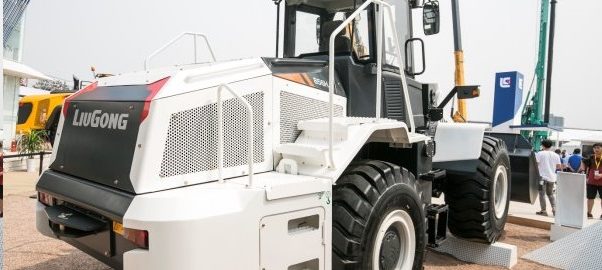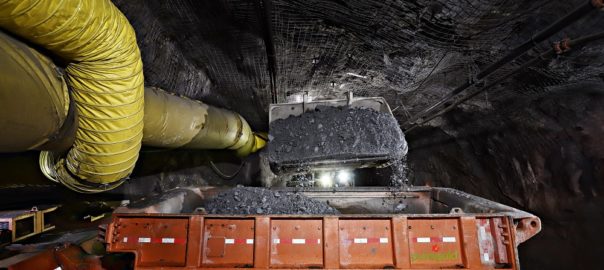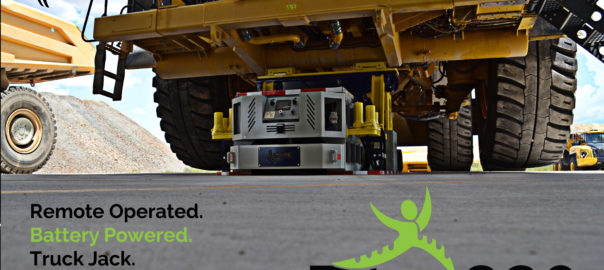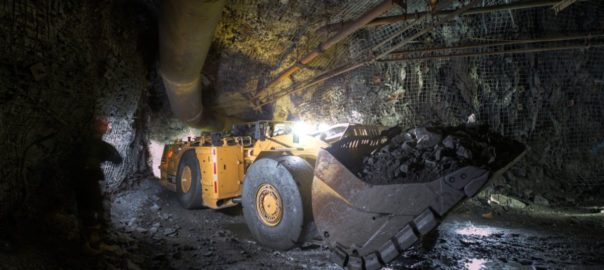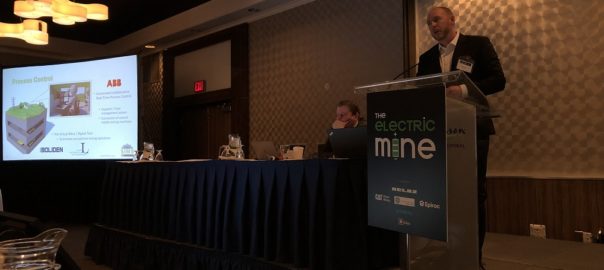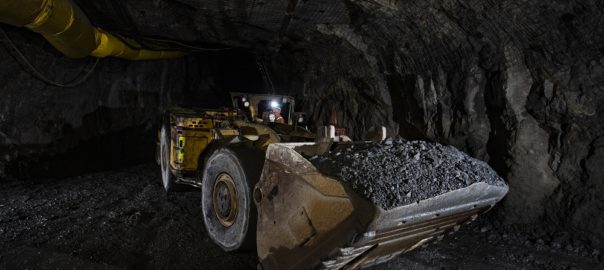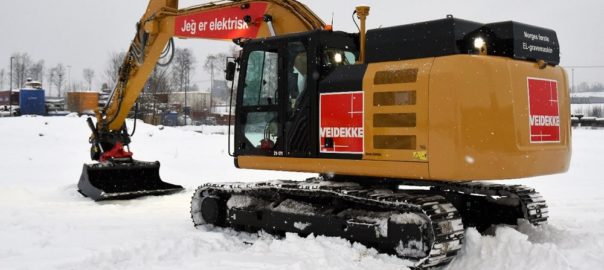LiuGong has used the backdrop of the 15th Beijing International Construction Machinery Exhibition & Seminar (BICES 2019) in China to launch a new range of battery-electric vehicles (BEVs) as well as remote controlled ‘intelligent’ wheel loaders based on 5G technology.
At BICES 2019, LiuGong is showing three BEVs, including two excavators – the 906E-EV and 922F-EV – and the company’s star wheel loader, the 856H-EV (pictured).
While not all these machines will be big enough to have mining applications, LiuGong explained that the units were very much the start of a platform that could see bigger machines manufactured.
Edward Wagner, Executive Director of LiuGong New Technology, said the total operating cost of a battery powered earthmover is, or soon will be, “depending on the exact vehicle design and customer application, lower than that of a diesel-powered machine”.
LiuGong’s new BEVs are designed for the new electric economy, it said, with a state-of- art, but well proven, lithium-ion battery system for energy storage.
“That power is directed into super high efficiency permanent magnet electric motors to create the motion necessary to drive the machines,” it said. “The machine’s mechanical and hydraulic systems have been optimised for high efficiency: a typical BEV will have peak power output that is two times a conventional diesel power machine. This enables the battery electric earthmovers to accelerate faster and perform more coordinated movements.”
These movements will also be more precise given the full electronic vehicle control, according to LiuGong. “More powerful, quicker and more precise all add up to more productivity, which is raised more than 10% compared to that of a diesel machine,” the company said.
These lithium-ion batteries are designed to last the full life of the machine and eliminate the daily maintenance and regular service routine that comes with diesel engines.
The first generation of LiuGong’s BEVs batteries are equipped with fast charging technology and innovative energy-saving technologies, according to the company. This sees them need only one hour to charge the battery to 80% capacity.
Zeng Guang’an, Chairman of LiuGong Group, at the launch ceremony for LiuGong’s BEVs, said: “We are committed to creating more value for our customers. And that is why LiuGong will never stop independent innovation.”
The LiuGong’s 906E-EV excavator is an example of how quickly and easily a diesel machine can be converted to battery electric, the company said. This machine uses most of the diesel excavator’s hydraulic system allowing for a very rapid conversion time. It is equipped with a battery large enough for a full working day, according to the company.
The new 922F-EV excavator is driven purely by electric power, with the battery pack located centrally in the rear for optimum mass balance. The electric motor and hydraulic system have been optimally packaged to maximise operator visibility, LiuGong says. “The result is industry leading operator visibility which will further enhance performance and efficiency.”
A feature of the new 856H-EV wheel loader is a pure electric driveline with regeneration. This improves operating performance and reduces the energy consumption.
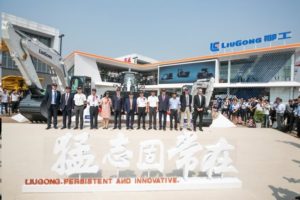
LiuGong explained: “The hydraulic system is electrically driven while using proven off the shelf components. Performance is incredible given the 300-plus-kW peak power capability.”
All three machines are designed using a new platform strategy, which means a very high degree of commonality of parts and systems across all LiuGong’s new energy machines. “This simplification of parts will further lower the total cost of ownership,” it said.
LiuGong introduced the company’s first intelligent shovel remote control wheel loader at its 60th anniversary celebration last year and, at BICES, it has presented its new 5G-based remote-control intelligent wheel loader, co-developed and supported by China Telecom and Huawei technology.
According to Cai Dengsheng, Deputy Chief Engineer of LiuGong’s Intelligent Technology Institution, the model can be remotely controlled from over 2,000 km away, compared with 2 km as of last year, realising real-time response and accurate control through the 5G network.
This 5G network is the most advanced network communication technology in the world with only 30 millisecond data transition from Beijing to Liuzhou, according to LiuGong. “Meanwhile, the transmission quality or stability are not influenced by either a complex environment or long transition time,” the company said. “It is the best technical solution for timely, efficient and high-quality transmissions of large amounts of data.”
The company added: “It provides a high-quality network environment and network technology support for LiuGong’s remote control driving research and provides strong support for the combination of edge calculation and cloud computing in intelligent control under remote control conditions.
“As one of the few Chinese construction machinery companies that has mastered the 5G technology, LiuGong is expected to realise remote-control driving from even longer distances under this platform.”
In addition, LiuGong’s intelligent shovelling wheel loader can sense material penetration; has one bottom loading and dumping function, along with auto levelling and controllable placement of the bucket. It also features an intelligent throttle control system, the company said.
Under remote-control driving mode, all operations can be observed from the videos that are sent back by the machines’ cameras. It also applies the intelligent protection technology to realise automatic identification and auto emergency stop.
As a result, the machine can not only be used in its normal applications, but also can be applied in dangerous and unsafe environments such as rescue and disaster relief.
F-Series excavators
In addition to the BEV and 5G releases, LiuGong used the event to launch four new excavators in its F-Series range that have mining applications.
The 922F is a new-generation 22-ton hydraulic excavator. It and the other F-Series vehicles come with a fully electronically controlled hydraulic system and intelligent heat dissipation technology, with the excavator boasting high operating efficiency, low oil consumption and low noise.
It has “unique engine matching technology and new P/S/E mode ensure higher efficiency and low oil consumption”, the company said.
The company also launched the 926F 25-ton hydraulic excavator, the 936F 36-ton excavator with 1.7 cu.m bucket and the 92-ton 990F excavator which comes with a heavy-duty structure and optimised crushing design.






